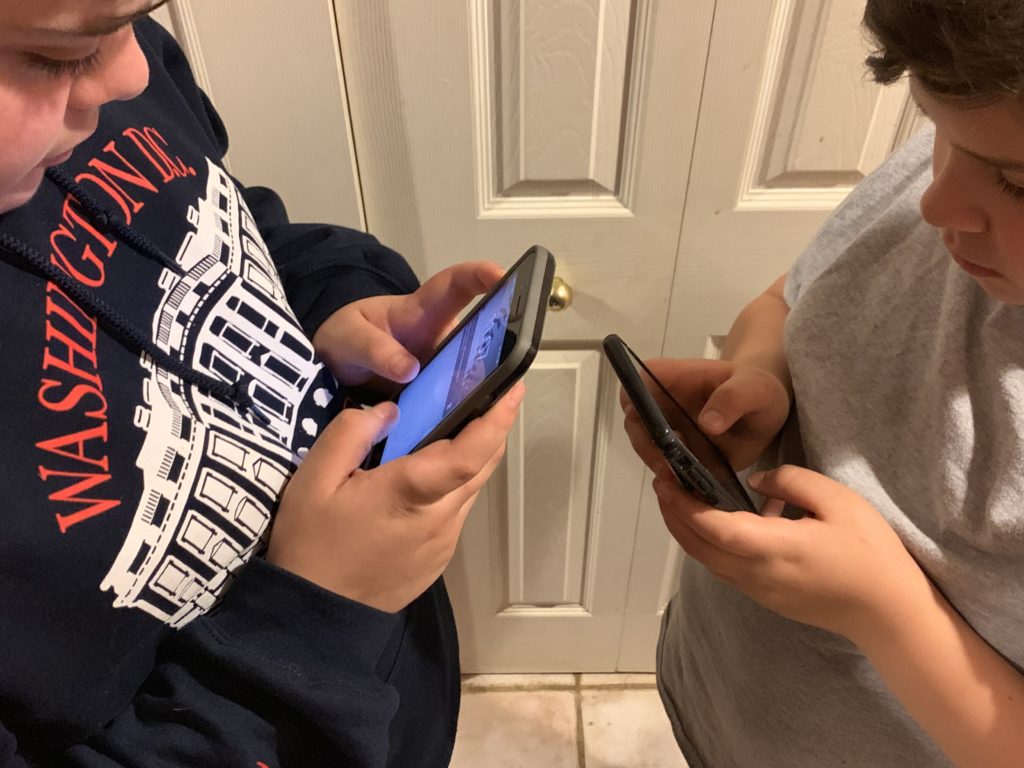
BY MATT MACKINDER
Clarkston News Staff Writer
Since cell phones have become a way of life for much of the population, this has trickled down to schools.
Clarkston Community Schools does not have a district-wide on student cell phone usage, but each school distributes and discusses a school specific code of conduct to each student at the beginning of the school year. Codes are updated each year and receive approval from the Board of Education prior to distribution.
The code at Clarkston High School has two cell phone provisions, outlining proper use expectations for students and potential consequences should students fail to adhere to the stated regulations.
“Students may use personal communication devices (PCDs) before and after school, during their lunch break, in between classes as long as they do not create a distraction, disruption or otherwise interfere with the educational environment, during after school activities (e.g., extracurricular activities) and at school-related functions,” reads the code of conduct.
“Teachers do have some leeway within the confines of their individual classrooms when it comes to proper use, as seen from both academic and social (or personal) perspectives,” said CHS Principal Gary Kaul. “It is the expectation that teachers provide guidance to students and adhere to the standards put forth in our code of conduct to ultimately help students understand that the phone is a tool and that there are proper use parameters and protocols which must be in place.”
Kaul added that even with rules in place, disruptions do occur.
“Much like with any rule that is in place, there are times when the rule is violated,” said Kaul. “Most cell phone disruptions we encounter could be avoided and only cause a disruption to the particular student who chooses to use their device at an inappropriate time. In other words, cell phone use rarely causes a whole-class or school disruption. We have a graduated system of interventions for misuse of personal electronic devices from least to more punitive actions. On occasion, students will have what amounts to inappropriate communication, often outside of school hours, which cause issues in school. We do our best to mediate disputes or issues between students as we would if it involved a cell phone or not.”
Further conditions of high school cell phone usage state that, “Use of PCDs, except those approved by a teacher or administrator, at any other time is prohibited and they must be powered completely off (i.e., not just placed into vibrate or silent mode) and stored out of sight. Also, during school activities, PCDs shall be powered completely off (not just placed into vibrate or silent mode) and stored out of sight when directed by the administrator or sponsor. Under certain circumstances, a student may keep his/her PCD ‘on’ with prior approval from the building principal.”
Clarkston News readers commented on the paper’s Facebook page on if student cell phone usage is out of control. As of April 19, the poll had received 214 votes – 168 “yes” votes, 46 “no” votes.
“Cell phone use during school hours is a distraction and very disrespectful to the teachers who are trying to educate our children,” wrote Melissa Iacobelli-Champion. “I was an instructor once; I collected the cell phones upon entering my classroom. The students dropped them in a basket. Family members had to call the institution if there was an emergency. Old school ways aren’t so bad.”
Sheila Goins Hughes said there is “no need” for students to use cell phones, saying, “Kids don’t need distractions during school! They are there to learn!”
“As a parent and a substitute in the schools, it is very difficult to get the kids’ attention and not have the parents texting their students during class,” added Tricia Land. “When I was there, phones had to stay in the locker until in between classes only.”
Students aside, Kaul noted that there are also guidelines for high school staff cell phone usage.
“Official staff cell phone policy deals with devices that are provided to staff by the district,” Kaul said. “There is no formalized cell phone use policy for personal devices at CHS, though the expectation for a personal communication device is that staff with make efforts to refrain from conducting personal business during academic time, regardless of what type of medium said staff member may be using to communicate, which is common practice in any line of work.
“On a side note, we have also seen that at a school as large as CHS, we are able to communicate quickly and effectively with teaching staff by utilizing their personal cell phones, particularly if they are in teaching assignments which may take them around the building, or are in very active roles, such as members of our special education teaching team, our physical education teachers, and members of our administrative team.”
Still, as times change, might a policy be enacted to corral cell phone usage during school hours across the district?
“To further the corral analogy, if you are asking me personally, the horse is out of the barn on this one,” Kaul said. “This generation of young Americans, and those to follow, are indelibly tied into mobile communication devices. I do not see our main focus to corral their use, though in a school setting, some type of fencing out on the open field is always necessary so they don’t wander willy-nilly onto the neighbor’s property and eat their grass. I think it is our job to educate young people on proper use from both social and academic or professional standpoints.”
